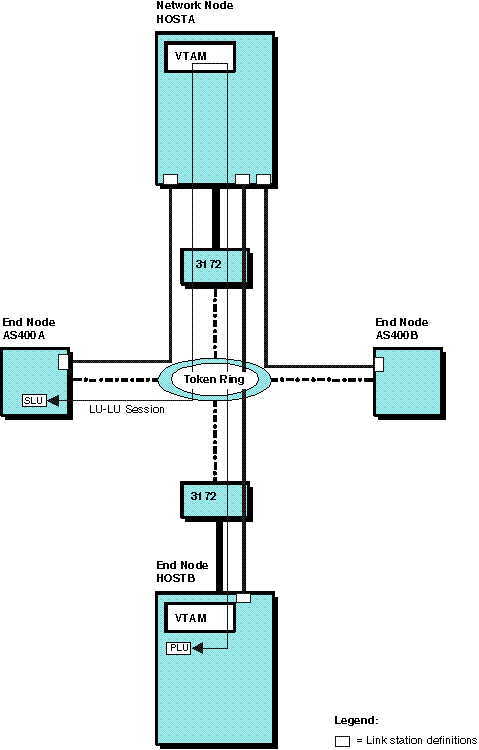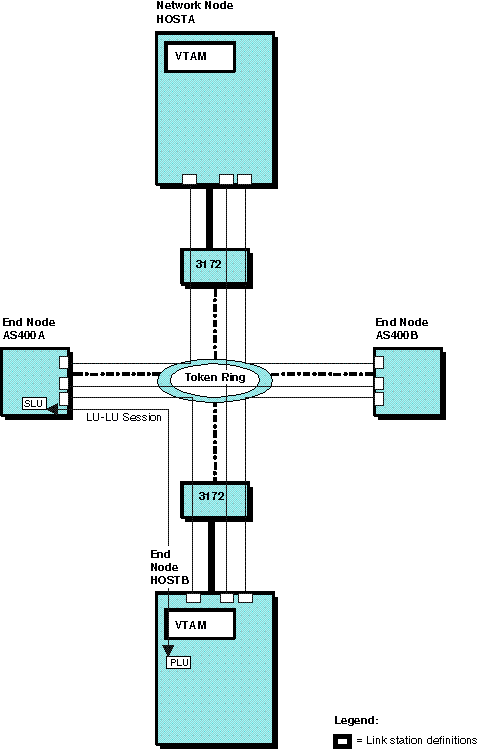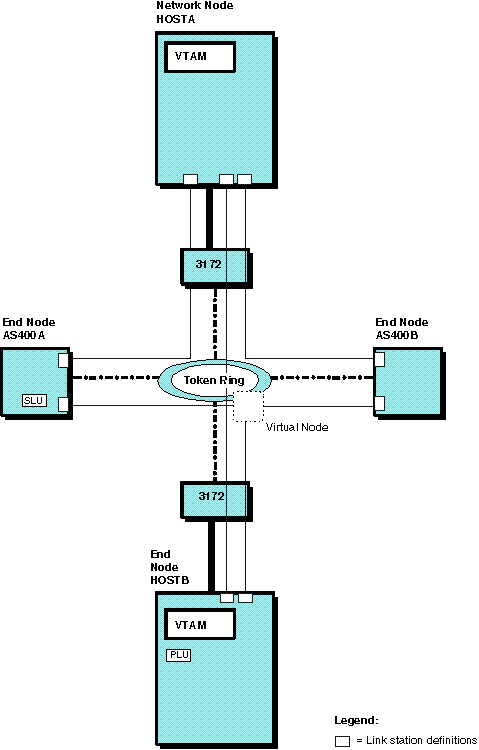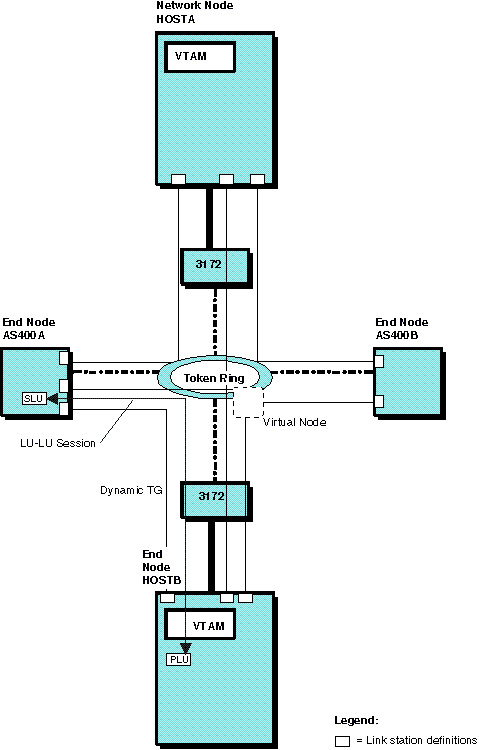 z/OS Communications Server: SNA Network Implementation Guide
z/OS Communications Server: SNA Network Implementation Guide
 z/OS Communications Server: SNA Network Implementation Guide
z/OS Communications Server: SNA Network Implementation Guide
|
Previous topic |
Next topic |
Contents |
Contact z/OS |
Library |
PDF
Using a connection network z/OS Communications Server: SNA Network Implementation Guide SC27-3672-01 |
|
|
A connection network is a representation of a shared access transport facility (SATF), such as a local area network (LAN). This arrangement enables nodes identifying their connectivity to the SATF by a common virtual routing node to communicate without having individually defined connections to one another. This is illustrated in the following figures. In Figure 1, when an LU-LU session between resources at AS400A and HOSTB is set up, the optimal route is directly through the token ring between the two nodes. However, if AS400A and HOSTB are not directly defined to each other or are not connected to the same connection network, the indirect route is selected through HOSTA. Figure 1. VTAM attachment to a LAN—No meshed connection
definitions
 Optimal route calculation is achieved in one of two ways:
A definition for the connection between each pair of nodes, (n*(n-1)) definitions where n equals the number of nodes, enables optimal route calculation between all nodes on the SATF. In Figure 2, for example, the pictured LU-LU session no longer traverses HOSTA. Figure 2. VTAM attachment to a LAN—Meshed connection definitions
provide optimal route calculation
 In a large network, however, this system definition is extensive. System definition is greatly reduced by defining a connection network to represent the shared access transport facility (here, the token ring). In a connection network, end nodes need to only define a connection to a virtual node, as shown in Figure 3. Figure 3. VTAM attachment to a connection network reduces
required connection definitions (token ring)
 The virtual node is reported to the topology database and can be chosen as the intermediate node during route calculation. As shown in Figure 4, BINDs can then be routed directly to the destination node over a dynamically created TG. Thus, the definition of a connection network to represent the token ring reduces required system definition and enables optimal route calculation. Figure 4. VTAM attachment to a connection network also
enables optimal route calculation (token ring)
 To define a connection to a connection network, include the following
in the NCP major node, the XCA major node, or the LAN major node:
Notes:



|
 Copyright IBM Corporation 1990, 2014 Copyright IBM Corporation 1990, 2014 |